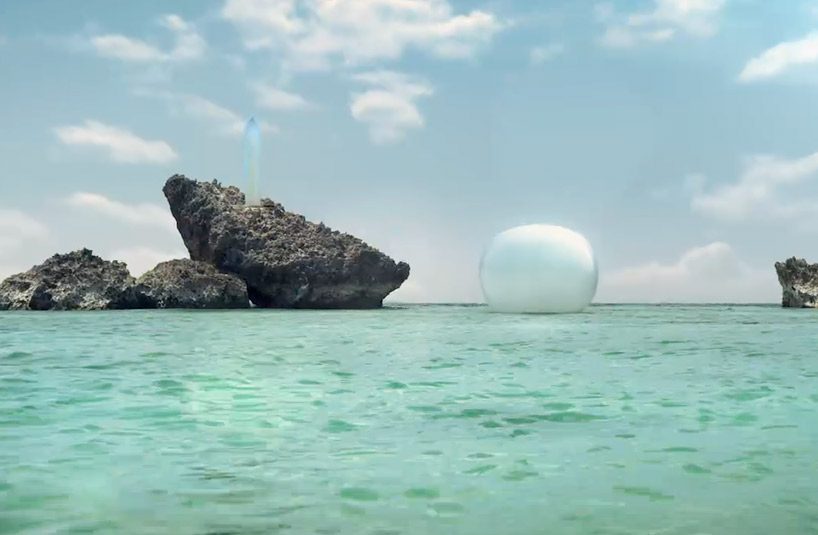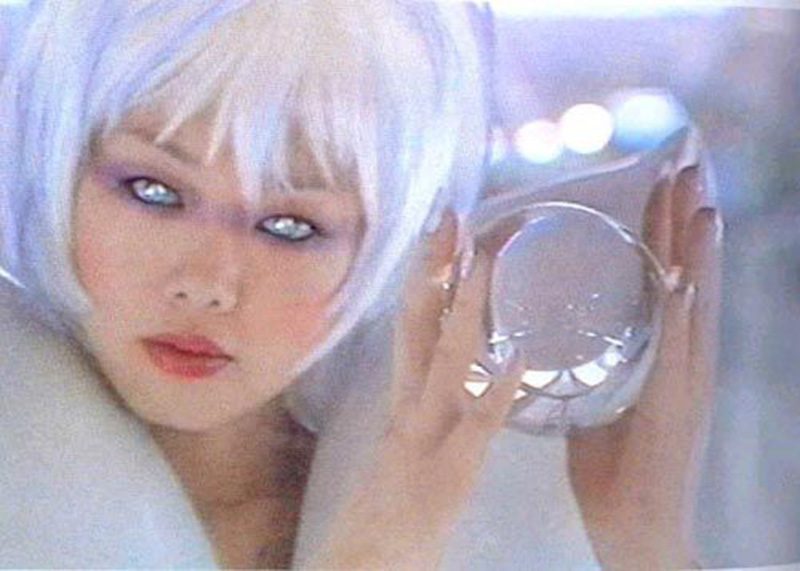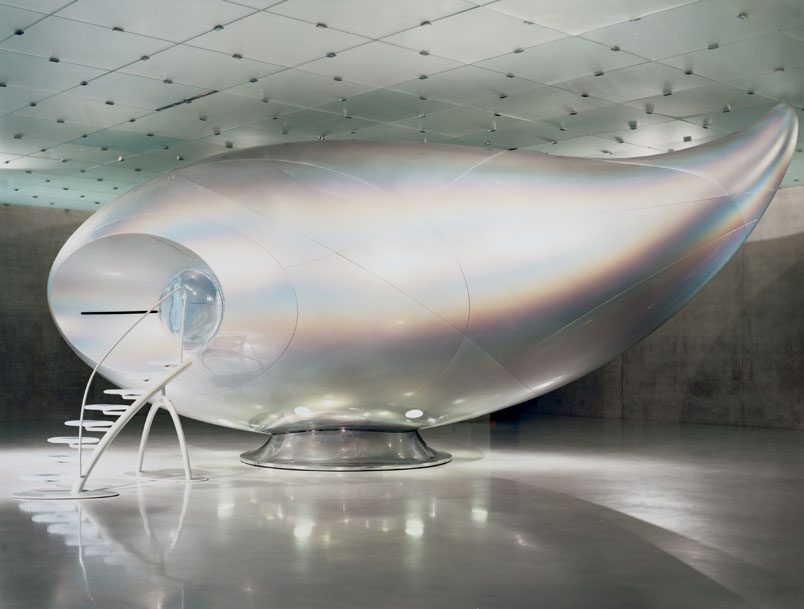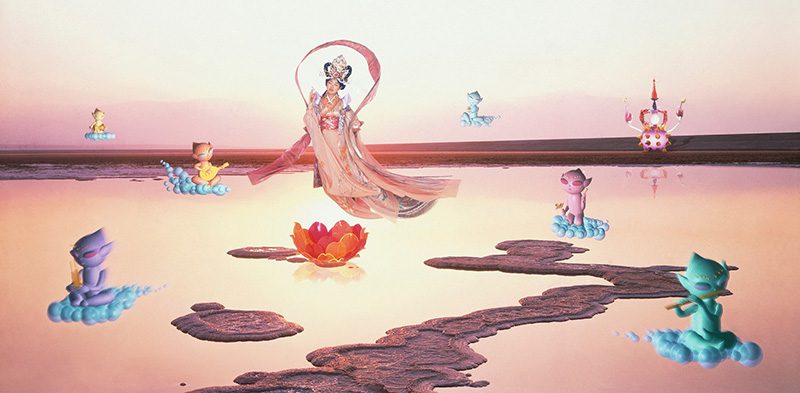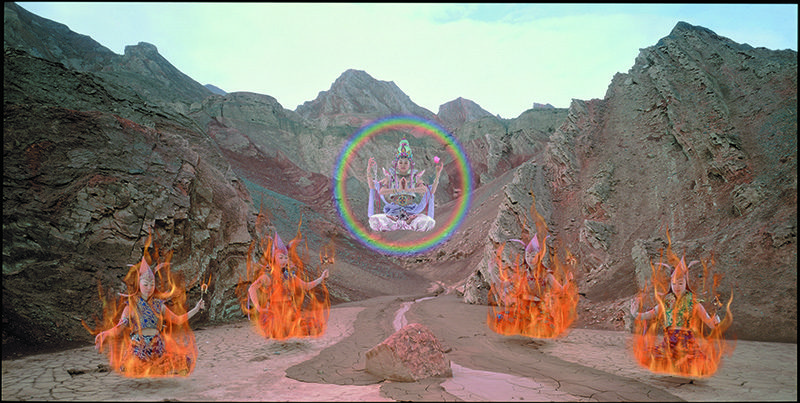INTERVIEW: Mariko Mori
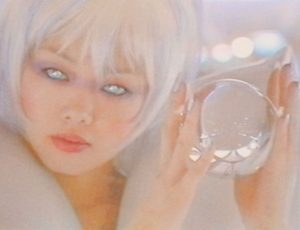 One of the most important and famous artists of the ’90s, a representative of a post-pop art and futurist art, with participations in major exhibitions worldwide, as at the Venice Biennale in 1993 and 1997, Mariko Mori, in 1999 on the occasion of a series of works, exhibited at Deste Foundation, gave us an exclusive interview, although she prefers more to speak through her work and not through interviews (she has given few). Occasion of the republication is the major exhibition, “Rebirth” with new artworks, organized at the Japan Society, New York that ended 01/12/14.
One of the most important and famous artists of the ’90s, a representative of a post-pop art and futurist art, with participations in major exhibitions worldwide, as at the Venice Biennale in 1993 and 1997, Mariko Mori, in 1999 on the occasion of a series of works, exhibited at Deste Foundation, gave us an exclusive interview, although she prefers more to speak through her work and not through interviews (she has given few). Occasion of the republication is the major exhibition, “Rebirth” with new artworks, organized at the Japan Society, New York that ended 01/12/14.
By Efi Michalarou
Photo: Catalog-Monography Mori, Serpetine Gallery
Mrs. Mori, first you studied fashion and then Art. What prompted you to turn to in Art?
I found that the fashion limits the possibilities of expressing my ideas and the opportunities for my personal introspection, because it promotes consumerism as is based on consumer culture.
Your artwork is clearly influenced by fashion.
Not only from fashion but also from the entire Pop culture, the everyday images and the objects that surround us. The music, the goods, the products and everything that affects us in one way or another. Fashion interested me very much and studied it at first, I learned aesthetics, and sometimes I find that aesthetics is central to my work.
You born in Tokyo but you studied in Europe, why do you preferred to study in London?
There was more freedom for experimentation on the work compared with Japan, more opportunities and exploration.
Then you moved to New York.
At first, I came for one year of studies, one of the main reasons I moved here is the support found on the art, thereby increasing the potentials of the artist.
In your job are primarily using buildings, places and people from your country, although you live in New York It could happen and vice versa?
Living in England and in the U.S., I felt the need to look back to my personal identity, in relation to the foreign culture. It was important for me to look from a distance my culture and to understand the tradition, but now I have reached the point that I am trying to find the essence, a common denominator in every culture.
A year ago, you collaborated with Fodazione Prada. How did that come?
I met Mrs. Prada in 1997. He had seen my work at the Venice Biennale, the same year and she contact with me, wanting to organize an exhibition for the next year. Having in my mind something more challenging, I suggested the “Dream Temple” and she was interested. I started the technical part and I proceeded. They helped me a lot in the field of architecture.
Therefore, you are satisfied with your cooperation with Muccia Prada.
Ah, yes!
That project went well. However, there is something strange happened, do you want to tell us?
It was exciting experience, a large-scale project with international participation. A wonderful job, which I believe only in Italy, could be done. For example, the group of Italian architects and manufacturers, the skilled glass artisan from Milan, the technological aspects of system engineering, for whom I worked with the American Arc… At the same time, I had the support of Japanese companies such as Shiseido for the computer graphics, Sony for three-dimensional sound and SDI Japan for the virtual reality system. I had therefore, an international team with the best components from all around the world, in cooperation with each other. It was a magical moment
Often you use yourself as a female model in your work, whence arises this need?
My experience from the world of fashion and the modeling from my 16, makes this form of expression very intimate for me. Moreover, I like to use body language and performance; both make it easier to express my ideas.
In an earlier interview you in the Purpe Prose magazine, you had said that women in Japan are cyborgs. Can you explain this?
The traditional Japanese culture wants women subservient and passive, without expressing their wishes. Now of course the phenomenon is not intense as in the past, but it is still difficult for women to have initiative and autonomy.
How love affects your life and work?
For all of us love and support are important things. We all want to become receivers of love, but is not always so easy to give one love to someone. Somehow, for me, is a life’s work to learn to offer love to others.
How have changed sexual mores in Japan compared to the past?
Traditionally women in the Far East were covered, which I find it more erotic, more sensual Today dominate the Western standards. Sex appears in popular culture and women’s appearance has changed.
I know most of your artwork, among my favorites are “Miko no Inori” and “Pure Land” Are there some with which you feel particularly connected?
“Dream Temple”. Every moment I spent in this project is memorable but also the project I am working now, it started in 1995 and I plan to finish it in 2000. A capsule that will encompass my body and will appear in places such as Times Square, New York and Piccadilly Circus in London.
The works I mentioned above, I like them because there is a balance between East and West. What does it mean for you that you live in the West, having grown up with the culture of the Far East?
I hope that one day the significance of national borders will be overcome and we all share a common consciousness. Local cultures are important, but in fact, there is a global common background, which will help us to understand the differences and realize the similarities, to stop fighting, destroy and pollute. I want to believe that, through the advance of science and technology, we have been more aware of these things than before. Your artworks are already in the future. What work could be representative of the 20th and what of the 21th century?
Every moment of the present already has a past and a future. When one is too facing in the past or in the future, cannot see the present.
What is the meaning of art for you?
Art for me is like a mirror that reflects life and mind.
What is more important in art for the artist?
“I believe to myself”. I think that everyone should remain faithful to himself and to believe in his abilities.
First Publication 1999
© Interview- Efi Michalarou
Download Greek version here.
